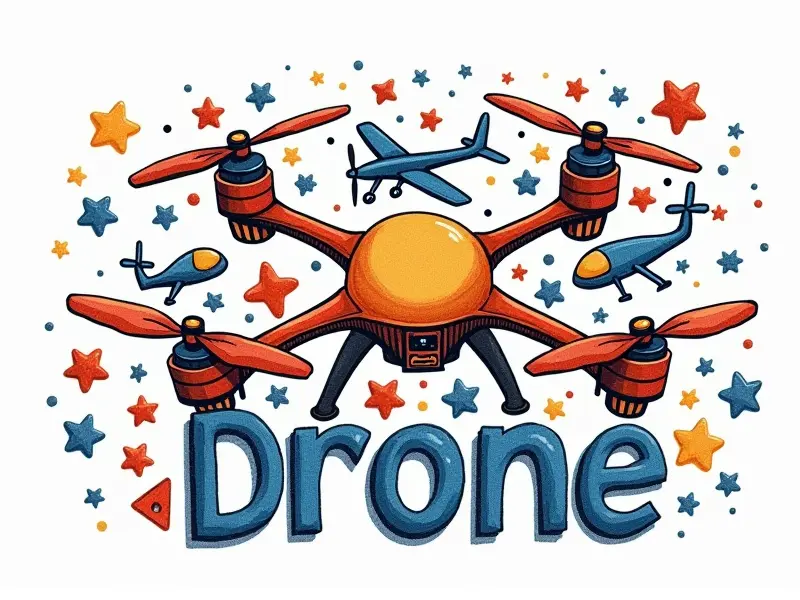Drone overheating solutions

How to Prevent Drone Overheating
Preventing drone overheating is crucial for maintaining the longevity and performance of your aerial equipment. Understanding the causes of overheating can help you take proactive measures to keep your drone running cool under all conditions.
- Avoid Extreme Temperatures: High ambient temperatures increase the risk of overheating, especially in direct sunlight or enclosed spaces.
- Monitor Battery Health: Overheating often starts with a malfunctioning battery. Ensure your batteries are healthy and not overcharged.
- Clean Regularly: Dust and debris can accumulate on the drone's components, hindering airflow and causing overheating issues.
Cool Down Your Drone: Quick Fixes
If you find your drone is heating up during operation, there are several quick fixes to help cool it down. These solutions are particularly useful for emergency situations or when you need immediate relief from high temperatures.
- Shade and Airflow: Move the drone to a shaded area and allow natural airflow to dissipate heat.
- Cooling Fans: Use portable cooling fans to direct air towards the overheated components of your drone.
- Limited Flight Time: Reduce flight time during hot weather conditions to prevent excessive heating.
Top Tips to Avoid Drone Overheating
Avoiding drone overheating requires a combination of maintenance, environmental awareness, and operational adjustments. Here are some top tips to keep your drone cool:
- Use High-Quality Components: Invest in reputable battery packs and cooling systems designed for high-performance drones.
- Monitor Battery Temperature: Regularly check the temperature of your batteries during operation to catch issues early.
- Upgrade Cooling Systems: Consider adding or upgrading built-in cooling solutions like heat sinks, fans, and thermal pads.
Beat the Heat: Drone Cooling Solutions
Drones can be equipped with various cooling systems to combat overheating. These solutions range from simple modifications to advanced technological integrations:
- Heat Sinks: Install heat sinks on critical components to absorb and dissipate heat more efficiently.
- Cooling Fans: Integrate cooling fans into the drone’s design to maintain a steady airflow around hot spots.
- Liquid Cooling Systems: For high-end drones, consider liquid-based cooling systems that provide superior thermal management.
Fixing Overheating Issues in Drones
If your drone is already experiencing overheating issues, it's important to address them promptly. Here are some steps you can take:
- Check Battery Health: Inspect batteries for signs of swelling or leakage and replace any faulty units.
- Clean Components: Remove dust and debris from the drone’s internal components to ensure proper airflow.
- Update Firmware: Ensure your drone's firmware is up-to-date, as newer versions often include thermal management improvements.
Keep Your Drone Cool and Flying
Maintaining a cool operating temperature for your drone is essential for its performance and longevity. By implementing the strategies outlined above, you can ensure that your drone remains operational even in challenging environmental conditions:
- Regular Maintenance Checks: Perform routine checks on batteries, cooling systems, and other components.
- Avoid Overloading: Do not exceed the recommended payload limits for your specific model of drone.
- Use Thermal Imaging Tools: Employ thermal imaging cameras to detect hot spots in real-time during operation.
Common Causes of Drone Overheating
Several factors can contribute to overheating issues in drones. Understanding these causes will help you take preventative measures:
- Battery Malfunction: Faulty batteries, especially lithium-ion types, are a common cause of overheating.
- Poor Airflow: Insufficient airflow due to blocked vents or enclosed spaces can lead to rapid temperature increases.
- High Ambient Temperatures: Operating drones in extremely hot weather conditions exacerbates the risk of overheating.
Preventing Drone Overheat with Simple Steps
Simplifying your approach to preventing drone overheating can make it easier to maintain optimal performance. Here are some straightforward steps you can take:
- Choose the Right Environment: Opt for cooler times of day or locations with better airflow.
- Monitor Battery Usage: Keep track of battery discharge rates and avoid full discharges, which can lead to overheating.
- Regular Cleaning: Clean your drone regularly to ensure that all components are free from dust and debris.
Cool Down Your Drone Fast
In situations where immediate action is needed to cool down a hot drone, here are some quick solutions:
- Shade and Ventilation: Move the drone to a shaded area with good ventilation.
- Cooling Fans: Use portable fans or blowers to direct air towards overheated components.
- Limited Flight Time: Reduce flight time during hot weather conditions until the drone cools down.
Top Tips to Avoid Drone Overheat
Avoiding overheating in your drone is a proactive approach that can save you from costly repairs and downtime. Here are some top tips:
- Select High-Quality Components: Invest in reliable batteries, cooling systems, and other high-quality parts.
- Maintain Regular Checks: Perform routine maintenance checks on your drone’s components to catch issues early.
- Avoid Overloading: Do not exceed the recommended payload limits for your specific model of drone.
Solutions for Hot and Sweaty Drones
When dealing with overheating drones, it’s important to have a variety of solutions at hand. Here are some effective strategies:
- Heat Sinks: Install heat sinks on critical components to absorb and dissipate heat.
- Cooling Fans: Integrate cooling fans into the drone’s design for continuous airflow.
- Liquid Cooling Systems: For high-end drones, consider liquid-based cooling systems for superior thermal management.
Conclusion
Maintaining a cool operating temperature is essential for ensuring your drone performs optimally and remains reliable over time. By implementing the strategies outlined in this article—from preventive measures to immediate fixes—you can effectively manage overheating issues and keep your drone flying smoothly under all conditions.

